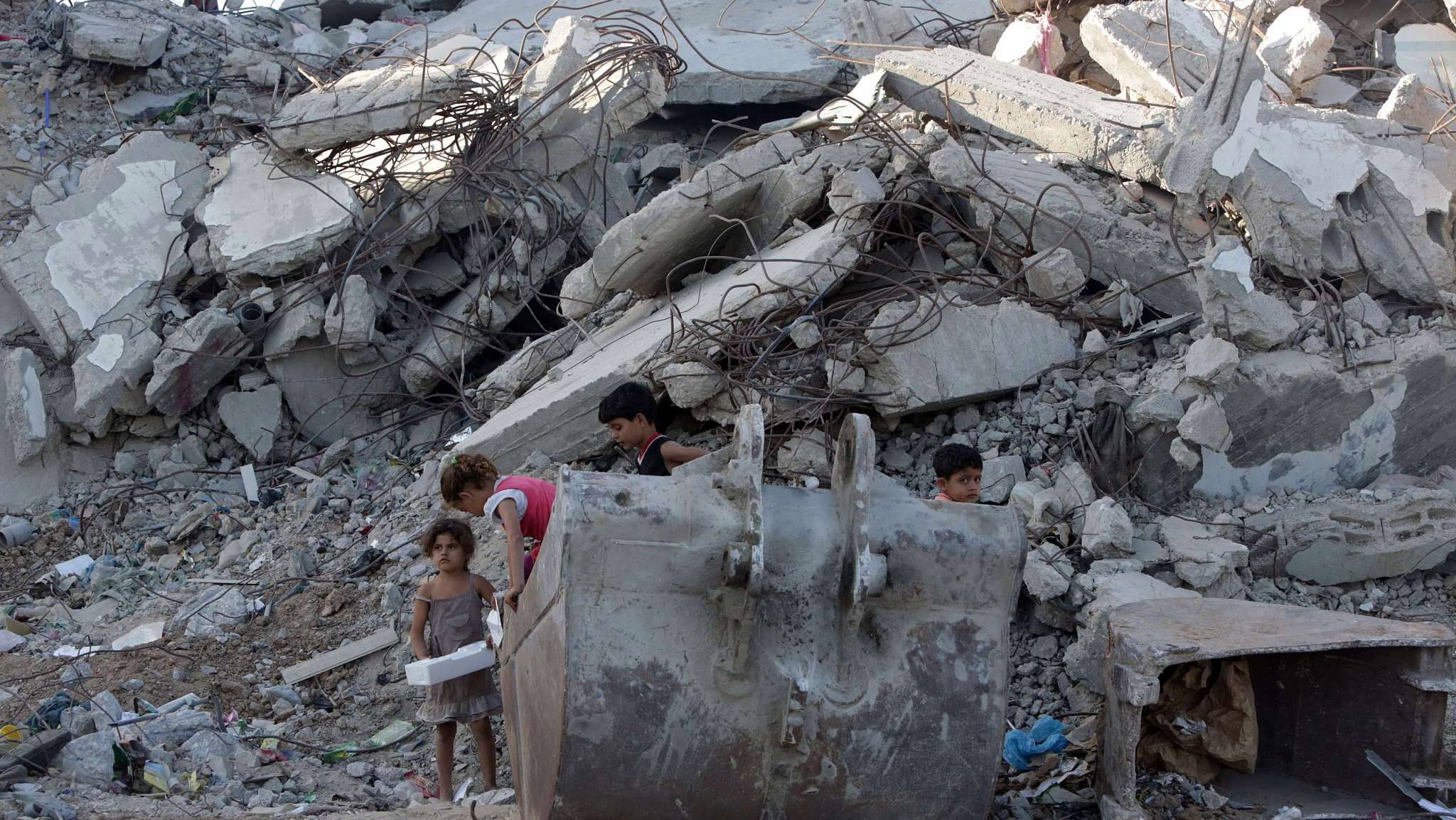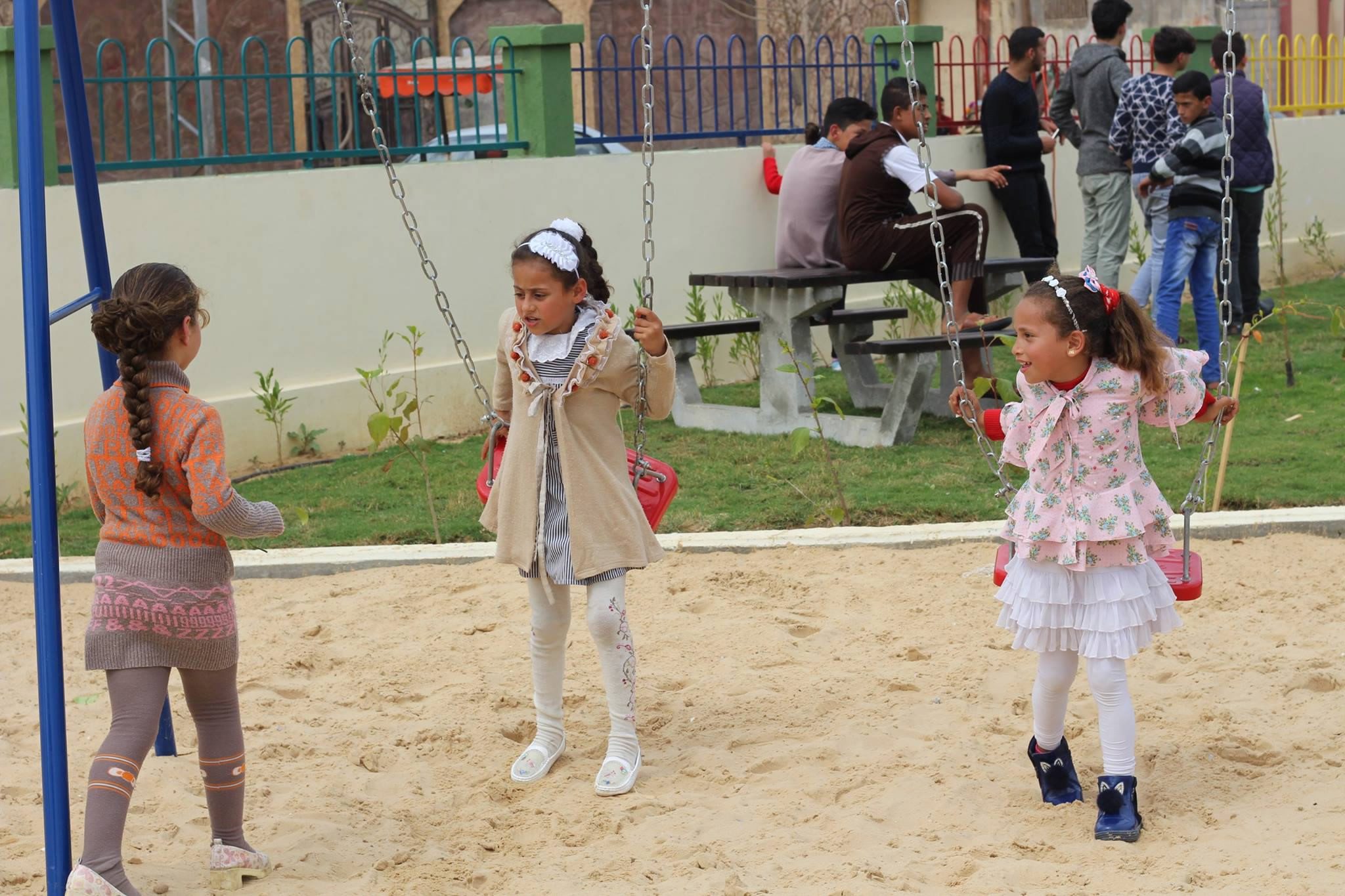
Tech & Sci
17:21, 13-Apr-2018
Park makeover offers escape for women in besieged Gaza
Nadim Diab & Alok Gupta

In the war-torn Gaza Strip, a group of women architects is giving open spaces a facelift, while giving residents an opportunity to have their voices heard.
Their community-led gender-inclusive park design aims to offer a breather to people reeling from a suffocating blockade that has had its toll on the living conditions and economic situations in the enclave.
The architects had a tough task coming up with a design that could impress everyone, while taking into account the conservative and battle-scarred nature of the space. Instead of sketching the 2,600-square-meter public garden in their offices, they decided to let everyday Gazans unleash their creativity.
A focus group of 30 people was tasked with reimaging a park located in the marginalized al-Shoka locality, with each participant (some as young as 10) asked to envision an open space that answers their needs and desires.
The team wanted participants to do more than just voice their opinions, they sought to give them a hands-on experience and help them bring their creations to life. They held a workshop to train the amateur architects on how to navigate Minecraft, a video game that allows players to use blocks to erect architectures, and asked them to design a public space that meets the needs of their community.
Women first

Gaza women during the inauguration ceremony of Al-Shoka Park. /UN Women Photo
Gaza women during the inauguration ceremony of Al-Shoka Park. /UN Women Photo
The focus was mainly placed on young women and girls, with their concerns prioritized.
Women are "the most vulnerable social group" in the strip, Dalia Osama, one of the architect trio behind the project, told CGTN.
A patriarchal system, the entrenchment of conservative views towards gender roles and the prevalence of sex-based stereotypes have put Gaza's women at a disadvantage.
Their predicament was worsened by the Israeli occupation and over-a-decade-long siege that has placed limits on freedom of movement, battered the economic situation and forced people into poverty.
Over 20 percent of single women and more than half of ever-married women in Gaza (51 percent) were subjected to some form of domestic violence in 2011, according to the most recent survey by the Palestinian Central Bureau of Statistics published in 2013.
The architects wanted women to feel safe, and worked to give them privacy in the outdoors.
"We designed women-only spaces, and provided separate toilets for a sense of safety," said Osama, adding that the community and architects decided to use trees as a separation between the different sections of the park.
Re-designing the public garden is a joint project launched by UN Women and UN Habitat under the “Utilizing Digital Tools to Promote Human Rights and Create Inclusive Public Spaces in the Gaza Strip” initiative. Authorities and architects are also working on the revival of Beit Lahia and Wadi as Salqa parks.
Designing in times of war
Designing a park in a conflict-ridden area was no cakewalk and had its own set of challenges.
Water elements had been a repetitive feature in the computer designs of the community members, but round-the-clock electricity is a luxury Gaza's two million population cannot afford.
Sporadic bouts of violence and a chronic blockade have weighed heavy on Gaza's infrastructure and its people's access to essential services. A daily power outage has had devastating effects on factories, sewage treatment facilities, and desalination plants, and inevitably impacted the park's design.
"Because of the economic situation, we had to scrap design features that are dependent on electricity," confessed Samah al-Nahal, another architect working on the project.
"We wanted waterfalls, but discarded the idea because it required pumps, and electricity is not available 24/7," she told CGTN, noting that they reached a common ground between expectations and practicality by opting for a small fountain instead.
Offering respite
Israel imposed a land, air and sea blockade on Gaza in 2006 to isolate Hamas, which it labels a terrorist organization and with whom it fought three bloody wars since 2008. Gazans have been since cut off from the world, amid rising levels of unemployment, poverty and mental health problems.

Children playing at a re-designed park at Al-Shoka. /UN Women Photo
Children playing at a re-designed park at Al-Shoka. /UN Women Photo
According to the 2015 Global Burden of Disease study, there is a strong association between conflict and depression and anxiety disorders. It is estimated that 15 to 20 percent of crisis-affected populations develop mild-to-moderate mental disorders including depression, anxiety, and post-traumatic stress disorders (PTSD). Around three to four percent develop severe psychiatric disorders, such as psychosis or debilitating depression and anxiety.
The World Health Organization has painted a grim situation about Gazans' mental health, estimating that as many as 20 percent of the population may have developed serious mental health conditions.
People in Gaza are trapped in a "sad reality" and their daily lives are "getting more and more wretched," a United Nations report published last year said, warning that by 2020, the enclave would be "unlivable."
The newly opened park offers a brief respite from the daily suffering. Parks in the enclave are far and few between, and those looking for a place to unwind under the shade need to commute for long distances, bringing extra costs to cash-starved families.
"We hope this experience brings a positive change to people and increase their sense of belonging. We wanted to deliver a beautiful concept and a beautiful execution," said Nihal Zourob, who also worked on the project, stressing the importance of community's participation in the park's makeover.

SITEMAP
Copyright © 2018 CGTN. Beijing ICP prepared NO.16065310-3
Copyright © 2018 CGTN. Beijing ICP prepared NO.16065310-3